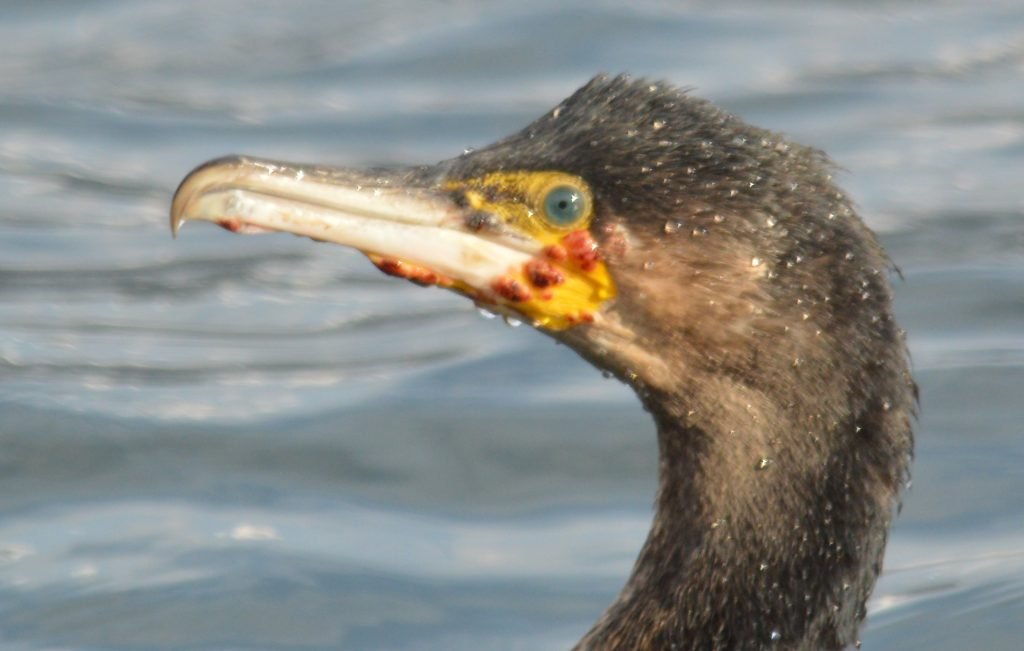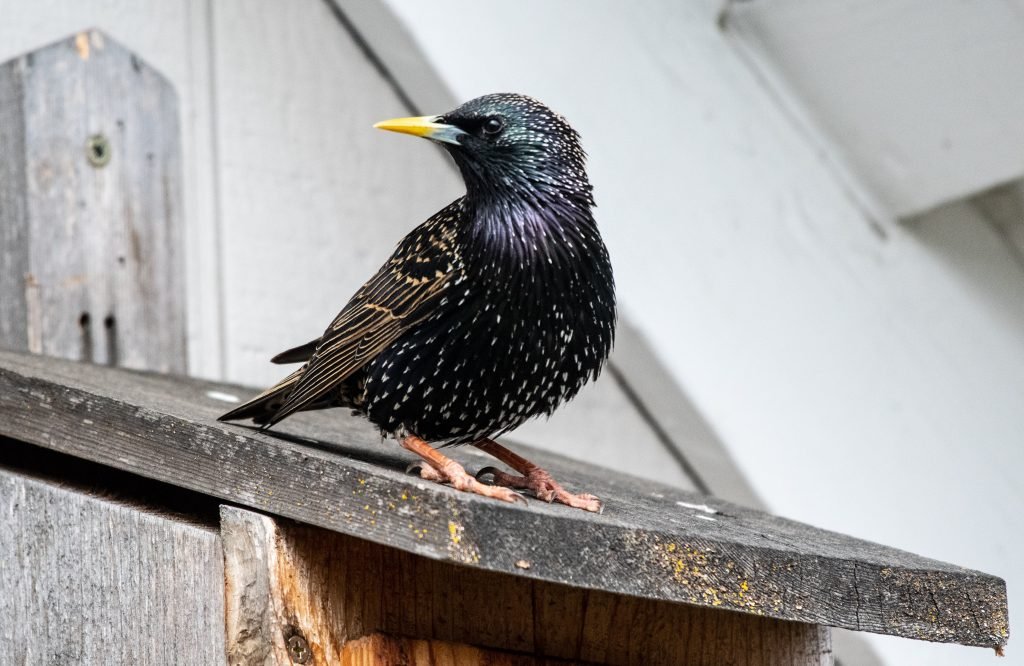Bird Control Services

Bird nests and droppings cause serious problems for homes and businesses, often requiring property owners to seek bird control help from wildlife experts. Furthermore, their droppings contain germs and bacteria that can cause up to 60 different diseases, infections, and illnesses in humans. This is especially problematic for locations that must adhere to strict sanitary standards, making it critical to hire a local bird control company for any nuisance bird problem. Animals Happen’s pre-qualified bird removal, and prevention experts are here to protect your property from bird damage.
Nuisance Bird Species
 While some birds are beneficial to us in producing down feathers, pest control, weed control, and providing opportunities for birdwatching, others can be harmful to our homes and health. Aside from being a nuisance, some birds can cause damage to structures and monuments, contaminate food sources, and transmit diseases to humans. The most common nuisance birds of North America include:
While some birds are beneficial to us in producing down feathers, pest control, weed control, and providing opportunities for birdwatching, others can be harmful to our homes and health. Aside from being a nuisance, some birds can cause damage to structures and monuments, contaminate food sources, and transmit diseases to humans. The most common nuisance birds of North America include:
Property Damage Caused By Birds
Bird damage manifests itself in a variety of ways. Pinholes in your siding or mounds of insulation strewn across your lawn are signs of damage. In an ideal world, you’d catch bird damage before insulation replacement is required, but be warned: birds can create costly damage quickly.
Bird damage is frequently outside of what is covered by your homeowner’s insurance policy, which is a major source of concern for homeowners. In most cases, damage caused by birds or rodents can be avoided, so staying on top of these issues is critical.
Chimneys, soffits, and vents are all areas where birds will seek access to your home. Birds will chip away at the materials protecting your home until they create an entry point larger enough to fit through. The following are signs that birds have made their way into your home:
- Vents that are clogged
- Fence holes and holes in nearby trees
- Window screens that have been ripped
- Gutters that have been damaged
- Attics with insufficient insulation
- Materials for nesting in and around the house
- Decks, wooden stairs, and railings are damaged
- Shingles have been damaged
Diseases Carried By Birds
Salmonella, trichomoniasis, aspergillosis, and avian pox are the four diseases that most commonly affect birds. All of these diseases are spread from one bird to the next at feeding stations or nesting sites, primarily when overcrowding occurs. Mites and lice can infect birds as well.
Avian Pox
 Avian pox is a slow-moving, mild to severe disease of birds caused by an avipoxvirus, of which three strains have been identified. Fowl pox virus, pigeon pox virus, and canary pox virus are the three strains. The virulence of the strains varies, and they can infect other avian species. However, many of the strains belong to distinct groups. Avian pox has been found in about sixty species of birds belonging to 20 families.
Avian pox is a slow-moving, mild to severe disease of birds caused by an avipoxvirus, of which three strains have been identified. Fowl pox virus, pigeon pox virus, and canary pox virus are the three strains. The virulence of the strains varies, and they can infect other avian species. However, many of the strains belong to distinct groups. Avian pox has been found in about sixty species of birds belonging to 20 families.
The avian pox virus can be transmitted in a variety of ways. Mechanical vectors, most notably mosquito species, can spread the disease. When a mosquito feeds on an infected bird with viremia (pox virus circulating in the blood) or virus-laden secretions from a pox lesion, the virus is transmitted to an uninfected person or animal. After feeding on an infected bird, mosquitoes can carry and transmit the virus for up to a month. 1Go To Source michigan.gov -“Avian Pox”
Aspergillosis
Aspergillosis is an infectious disease caused by fungi in the Aspergillus genus that affects birds and mammals. This disease can affect wild mammals, but it is more prevalent in birds. Aspergillus fungi are found worldwide, except for Antarctica, and are frequently diagnosed in a variety of avian species across North America. It feeds on decaying seeds, feeds, grains, peanuts, cereals, vegetables, soil, and decaying animal, plant, and feed material.
Although all species of birds (wild and domestic) are susceptible to aspergillosis, raptors, waterfowl, and gulls account for most reported cases. This disease has been reported in a variety of domestic and wild mammals, but the infections are sporadic. Humans with respiratory issuies are susceptible to infection. 2Go To Source vet.upenn.edu -“Aspergillosis”
Salmonella
While birds appear to be healthy and clean, they can carry germs such as Salmonella. Salmonella bacteria can be spread between birds, pets, and humans.
When you touch your mouth with unwashed hands after handling wild birds, bird feeders, birdbaths, bird guano, or your pets who have come into contact with wild birds, you may become ill. 3Go To Source cdc.gov -“Salmonella Outbreak Linked to Wild Songbirds”
Trichomoniasis
The single-celled protozoan Trichomonas gallinae causes trichomoniasis, an infectious disease of birds. This protozoan comes in various strains, some of which cause clinical disease and others that do not. In pigeons and doves, this disease is known as canker, and in raptors, it is known as frounce. With written records dating back to the 1500s, trichomoniasis is one of the oldest known wildlife diseases.
Trichomoniasis is the most common disease affecting mourning doves in North America, and it can lead to mass extinction. The largest trichomoniasis outbreak in history occurred in Alabama and neighboring states between 1950 and 1951, killing 50,000 to 100,000 mourning doves. It’s one of the feeder-associated diseases, and it’s spread to a variety of songbird species, causing serious population declines in some. 4Go To Source pgc.pa.gov -“Trichomoniasis”
Common Home Entry Points Used By Birds

- Gaps In The Soffits Or Brick: When soffits are installed at the roofline, they rarely meet the exterior brick completely flush. This is particularly true in the case of textured brick and stone. Sparrows enjoy nesting in this gap, which fills soffits and reduces attic airflow.
- Roof Vents: Birds have a habit of building their nests in unusual places. If a bird builds a nest in your roof vents, airflow from your attic will be obstructed. The water vapor can then build up until it condenses on attic surfaces, causing serious moisture damage.
- Chimneys: Birds may be enticed to come inside via chimneys. Some will rest on rooftops near chimney tops before trying to break into your house in search of food or shelter. Because some birds prefer to nest in hollow trees, a chimney can be a good substitute.
- Wall Vents: Similar to roof vents, wall vents produce warm air that attracts birds. Once inside, the birds will construct nests that block proper airflow.
Humane Bird Removal
Birds’ nesting material clogs vents, posing a fire hazard, and their droppings are a nuisance and can spread disease. Animals Happen’s pre-screened bird control experts humanely remove pest birds and ensure that they do not return. Bird control services include:
- Humane bird removal, control & prevention
- Bird nest removal and feces cleanup/decontamination
- Entry point damage repair and insulation replacement
- Birds proofing through the installation of exclusion devices such as bird spikes and bird spikes
Are Birds A Problem On Your Property?
Do you live in a house with birds? It isn’t always possible to remove them yourself. Trust a professional with the knowledge and equipment to safely remove the birds and their nests from your home. Bird control experts can completely eliminate any bird infestation and take preventative measures to ensure they won’t return. If you need bird removal services, contact Animals happen to set a time for a wildlife inspection from a local bird control professional. Give Us a call at 833-633-1120!
Sources:
- “DNR – Avian Pox.” Michigan.Gov, Michigan DNR, www.michigan.gov/dnr/0,4570,7-350-79136_79608_85016-26362–,00.html. Accessed 16 July 2021.
- Wildlife Futures Team Date: Dec 16, 2020. “Penn Vet | Fact Sheet Detail.” Vet.Upenn.Edu, University of Pennsylvania, 16 Dec. 2020, www.vet.upenn.edu/research/centers-laboratories/research-initiatives/wildlife-futures-program/resources/fact-sheets/fact-sheet-detail/aspergillosis-in-birds.
- “CDC: Salmonella Outbreak Linked to Wild Songbirds.” Centers for Disease Control and Prevention, 28 May 2021, www.cdc.gov/salmonella/typhimurium-04-21/index.html.
- PGC. “Trichomoniasis.” Pennsylvania Game Commission, www.pgc.pa.gov/Wildlife/Wildlife-RelatedDiseases/Pages/Trichomoniasis.aspx. Accessed 16 July 2021.
- “Bird netting installation – simple, effective bird control – Bird Proofing UK”. Bird Proofing UK | Expert Bird Control Services | Bird Spikes and Netting. Retrieved 2017-09-18.
- “What to Do About Pigeons : The Humane Society of the United States”. www.humanesociety.org.
- “Bird Control Methods Products Devices Services Pigeon Vulture Starling Grackle Buzzard”. www.birdcontrolmethods.com.
“What to Do About Pigeons”. The Humane Society. October 3, 2009. Retrieved August 17, 2012.
